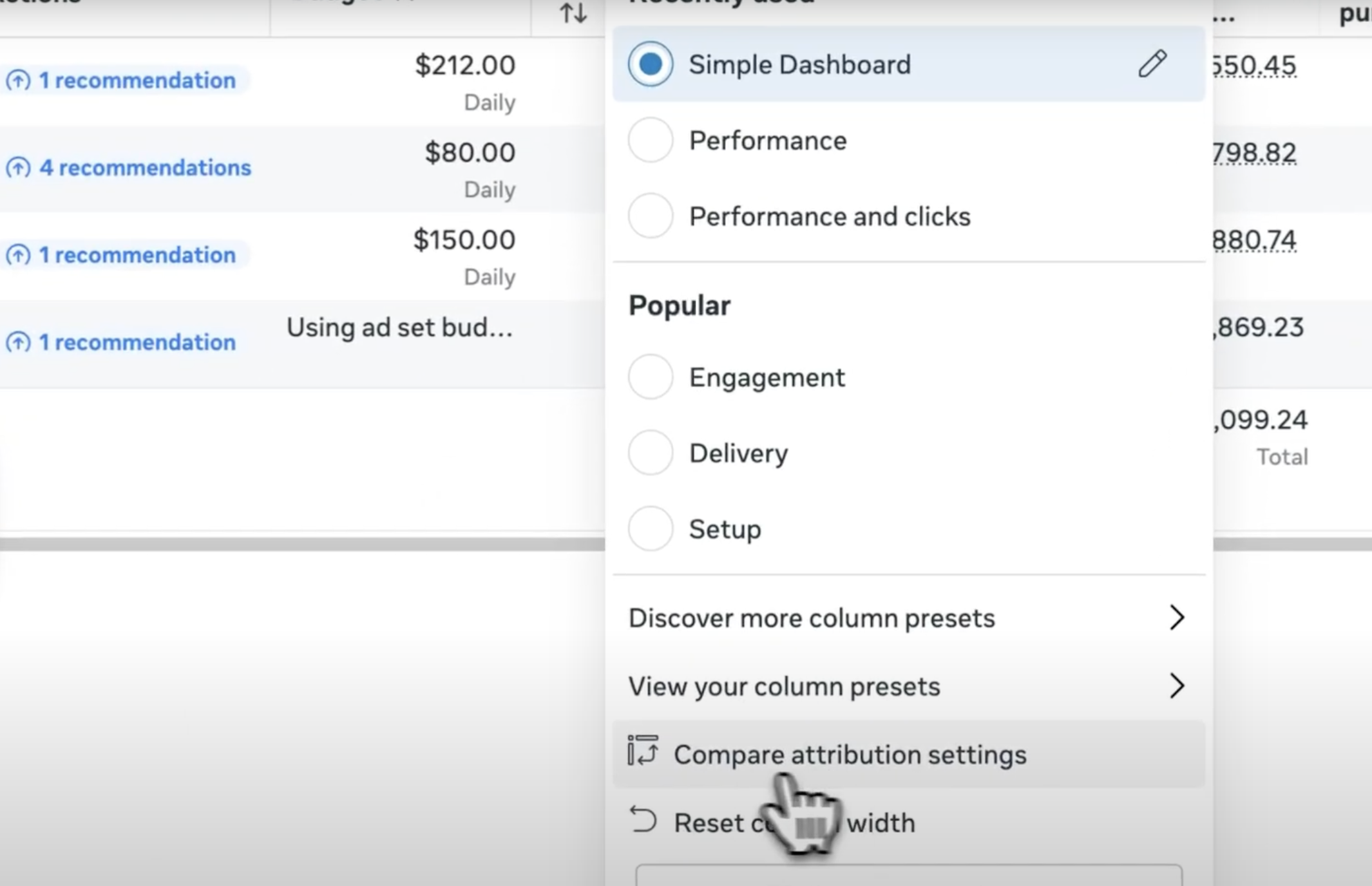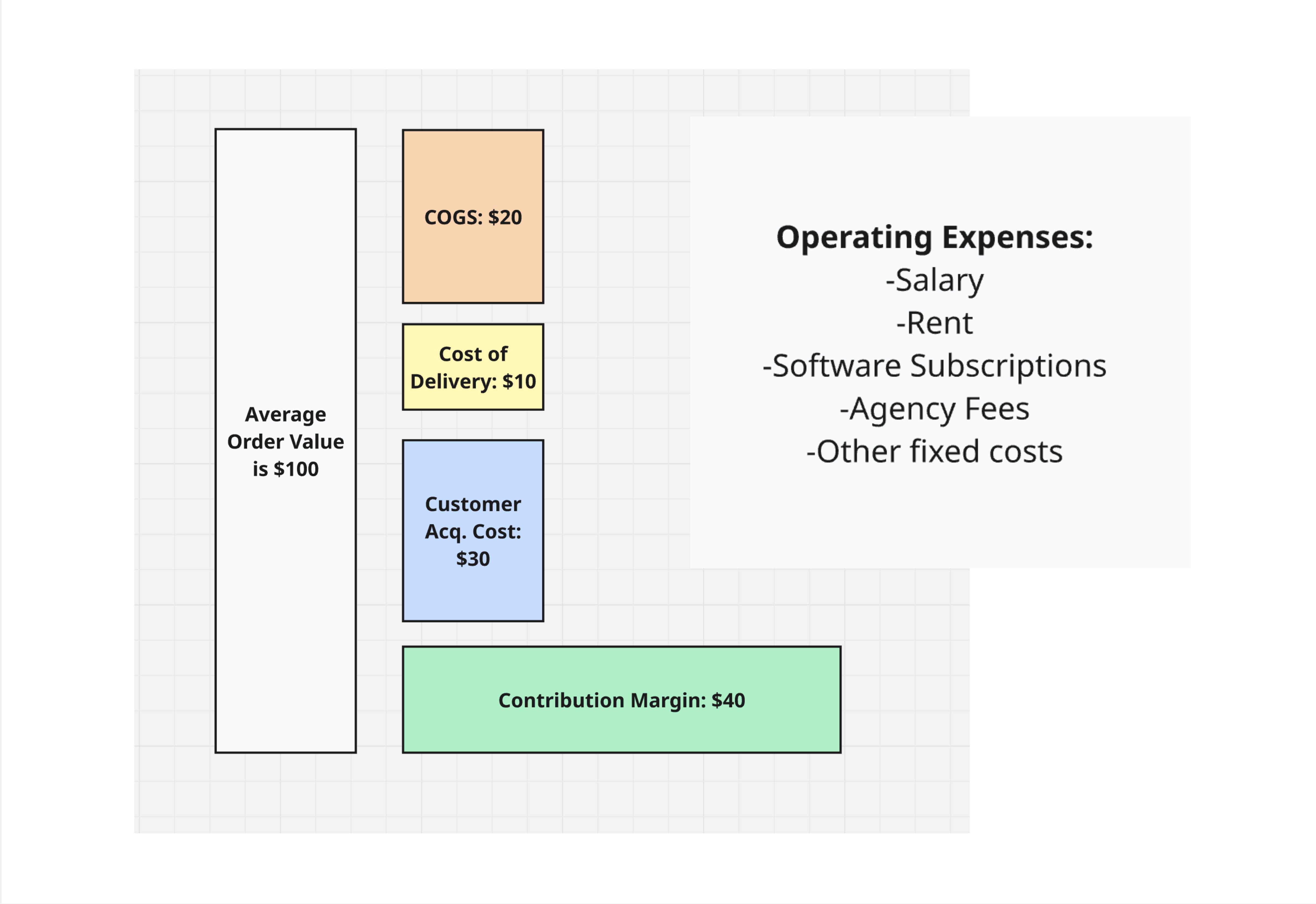Tactics: Meta's attribution window settings & their implications
If you're running paid campaigns on Meta, understanding your attribution windows isn't just a nice-to-have—it's essential for diagnosing performance and making smarter optimization decisions.
Here's a practical breakdown of how to analyze attribution settings in your Meta Ads Manager and what they can tell you about your campaigns.
How to Access Attribution Breakdowns
Start by navigating to your campaigns in Meta Ads Manager. Click on the columns section and select "compare attribution settings." This will show you different attribution windows available for analysis, independent of your campaign's optimization goal.

Select all available windows to get a complete picture of how conversions are being attributed across different timeframes.
Three Key Metrics to Analyze
1. View-Through vs Click-Through Conversions
Look at what percentage of your conversions are view-through versus click-through. In healthy campaigns, view-through conversions typically make up a smaller portion of total conversions.
Red flag: If 75-80% of your conversions are view-through, you might have an incrementality problem. This often indicates heavy remarketing—showing ads to people who are already primed to purchase or have visited your site multiple times. While these conversions get attributed to your ads, they may not be truly incremental.
2. Time to Conversion
Pay close attention to conversion lag. This metric reveals your product's consideration window and can significantly impact how you should approach testing and optimization.
Quick conversion example: A campaign generating 295 purchases where 237 happen within a single day signals a short consideration window. This makes sense for lower-priced impulse purchases (like a $50 product). The benefit? You get rapid feedback when testing new angles, offers, or pricing strategies.
Longer consideration example: If most conversions fall into the 28-day click window rather than same-day, you're dealing with a higher consideration purchase. This is typical for bigger ticket items that require more research and deliberation. In these cases, you might want to optimize your campaigns for the 28-day click window rather than shorter windows.

3. Incremental Conversions
Meta provides its own read on incrementality—essentially attempting to measure how many customers wouldn't have purchased without seeing your ads.
When incremental conversions closely match total conversions (like 250 out of 295), Meta is indicating that your campaign is driving genuinely new purchases rather than just capturing credit for sales that would have happened anyway.
Warning sign: A large gap between incremental and total conversions suggests Meta believes many of these customers would have purchased even without your advertising. This is Meta essentially grading its own work and telling you there's an incrementality issue to address.

Why This Matters
Understanding these attribution breakdowns helps you:
- Identify wasted spend on non-incremental conversions
- Set realistic expectations for testing timeframes based on your conversion lag
- Optimize for the right window based on your product's consideration cycle
- Diagnose campaign health when making strategic changes
This simple analysis, readily available in Meta Ads Manager, can reveal crucial insights about your product, your customers' consideration window, and whether your advertising changes are actually moving the needle.
Make it a regular practice to review these metrics—especially when launching new campaigns or testing significant changes to your paid media strategy.
Want help running this analysis for your brand? We've helped dozens of DTC companies uncover hidden insights in their product-level performance. Send us a message to get started.
Check out our other articles.
Get started today.
We only work with a handful of clients per year. If you're interested, book a discovery with our founder to see if this is a good fit.
What we do
Grow & scale your paid media program with a boutique team of eCommerce advertising pros.
Case studies
See what we've done for other brands and how we can help you. Read their stories.





